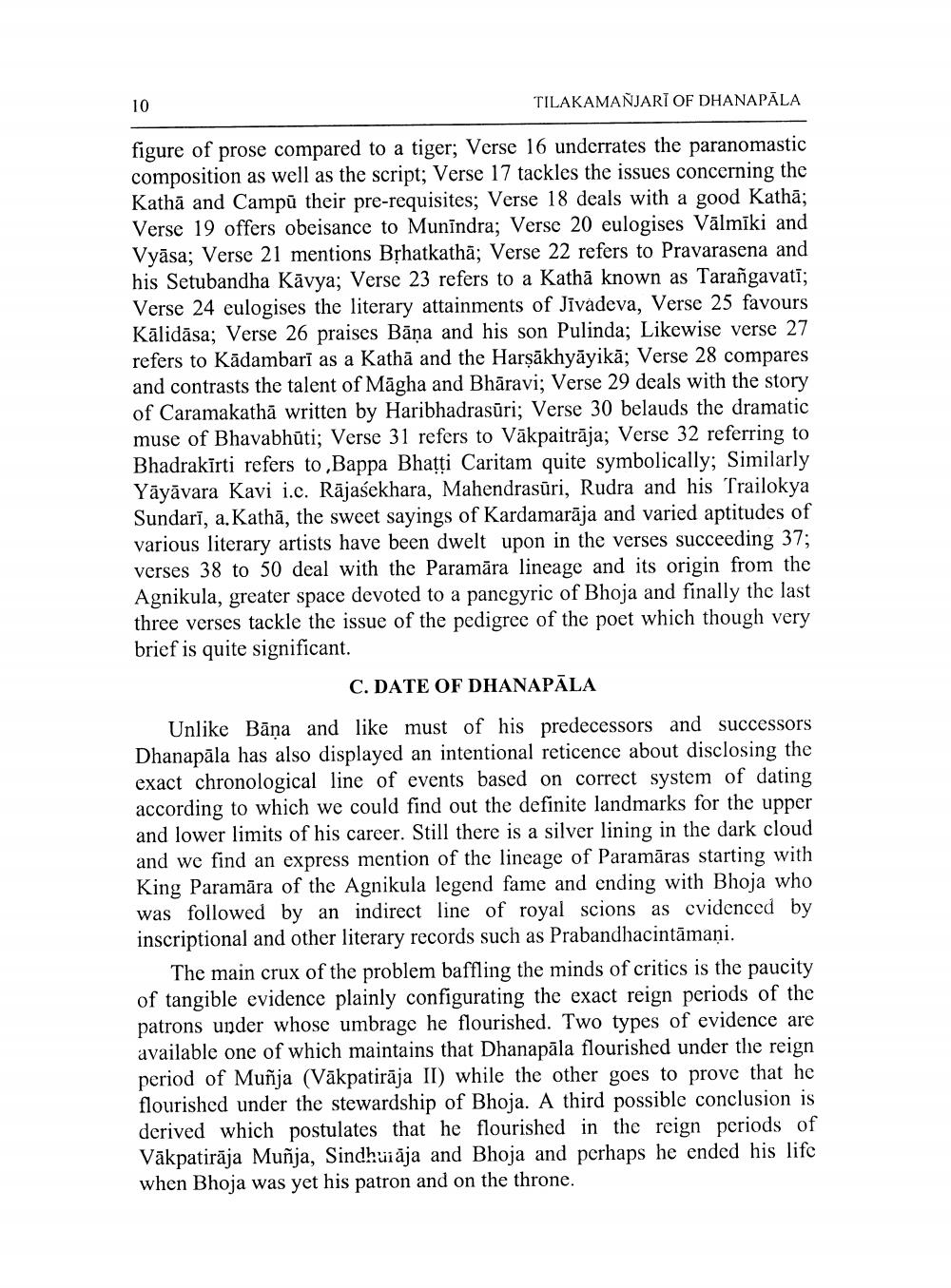________________
TILAKAMANJARĪ OF DHANAPĀLA
figure of prose compared to a tiger; Verse 16 underrates the paranomastic composition as well as the script; Verse 17 tackles the issues concerning the Kathā and Campū their pre-requisites; Verse 18 deals with a good Kathā; Verse 19 offers obeisance to Munīndra; Verse 20 eulogises Vālmīki and Vyāsa; Verse 21 mentions Brhatkathā; Verse 22 refers to Pravarasena and his Setubandha Kāvya; Verse 23 refers to a Kathā known as Tarañgavati; Verse 24 eulogises the literary attainments of Jivadeva, Verse 25 favours Kālidāsa; Verse 26 praises Bāna and his son Pulinda; Likewise verse 27 refers to Kādambarī as a Kathā and the Harşākhyāyikā; Verse 28 compares and contrasts the talent of Māgha and Bhāravi; Verse 29 deals with the story of Caramakathā written by Haribhadrasūri; Verse 30 belauds the dramatic muse of Bhavabhūti; Verse 31 refers to Vākpaitrāja; Verse 32 referring to Bhadrakirti refers to Bappa Bhatti Caritam quite symbolically; Similarly Yāyāvara Kavi i.e. Rājasekhara, Mahendrasūri, Rudra and his Trailokya Sundarī, a. Kathā, the sweet sayings of Kardamarāja and varied aptitudes of various literary artists have been dwelt upon in the verses succeeding 37; verses 38 to 50 deal with the Paramāra lineage and its origin from the Agnikula, greater space devoted to a panegyric of Bhoja and finally the last three verses tackle the issue of the pedigree of the poet which though very brief is quite significant.
C. DATE OF DHANAPĀLA
Unlike Bāna and like must of his predecessors and successors Dhanapāla has also displayed an intentional reticence about disclosing the exact chronological line of events based on correct system of dating according to which we could find out the definite landmarks for the upper and lower limits of his career. Still there is a silver lining in the dark cloud and we find an express mention of the lineage of Paramāras starting with King Paramāra of the Agnikula legend fame and ending with Bhoja who was followed by an indirect line of royal scions as evidenced by inscriptional and other literary records such as Prabandhacintāmaņi.
The main crux of the problem baffling the minds of critics is the paucity of tangible evidence plainly configurating the exact reign periods of the patrons under whose umbrage he flourished. Two types of evidence are available one of which maintains that Dhanapāla flourished under the reign period of Muñja (Vākpatirāja II) while the other goes to prove that he flourished under the stewardship of Bhoja. A third possible conclusion is derived which postulates that he flourished in the reign periods of Vākpatirāja Muñja, Sindhuiāja and Bhoja and perhaps he ended his life when Bhoja was yet his patron and on the throne.




